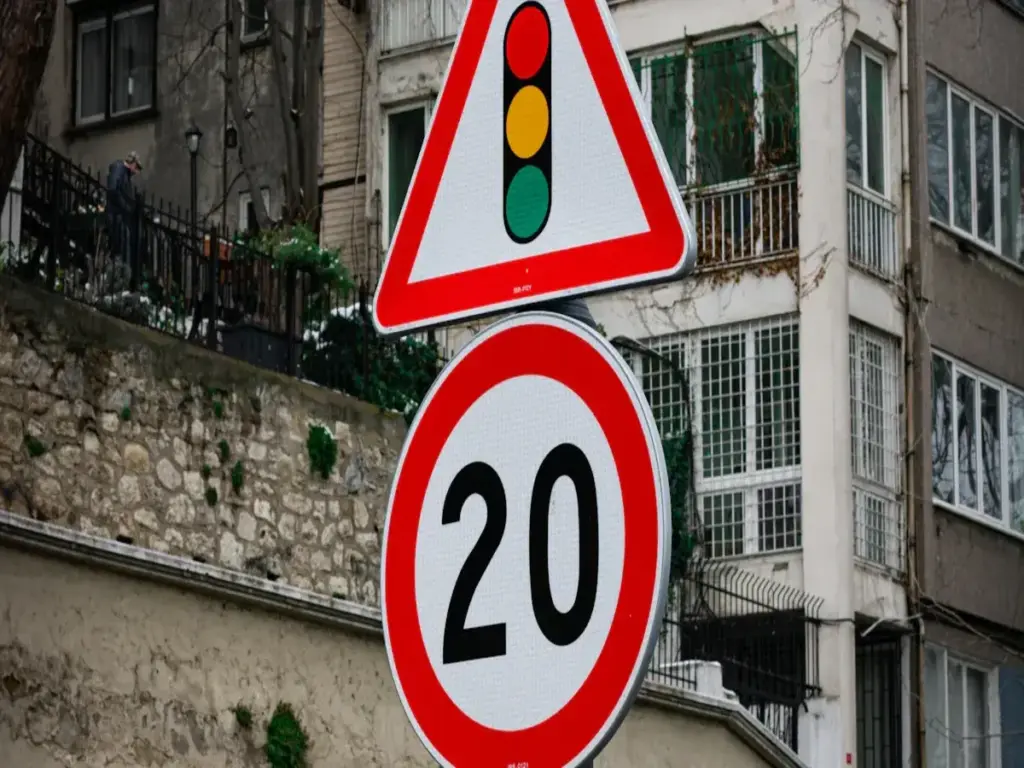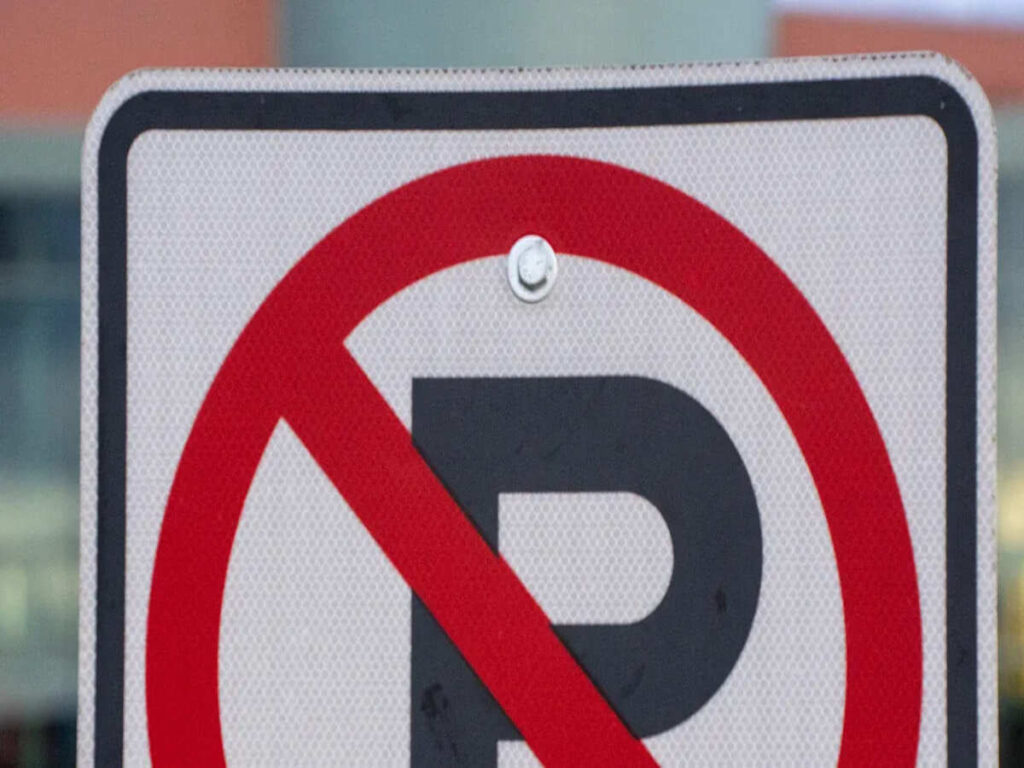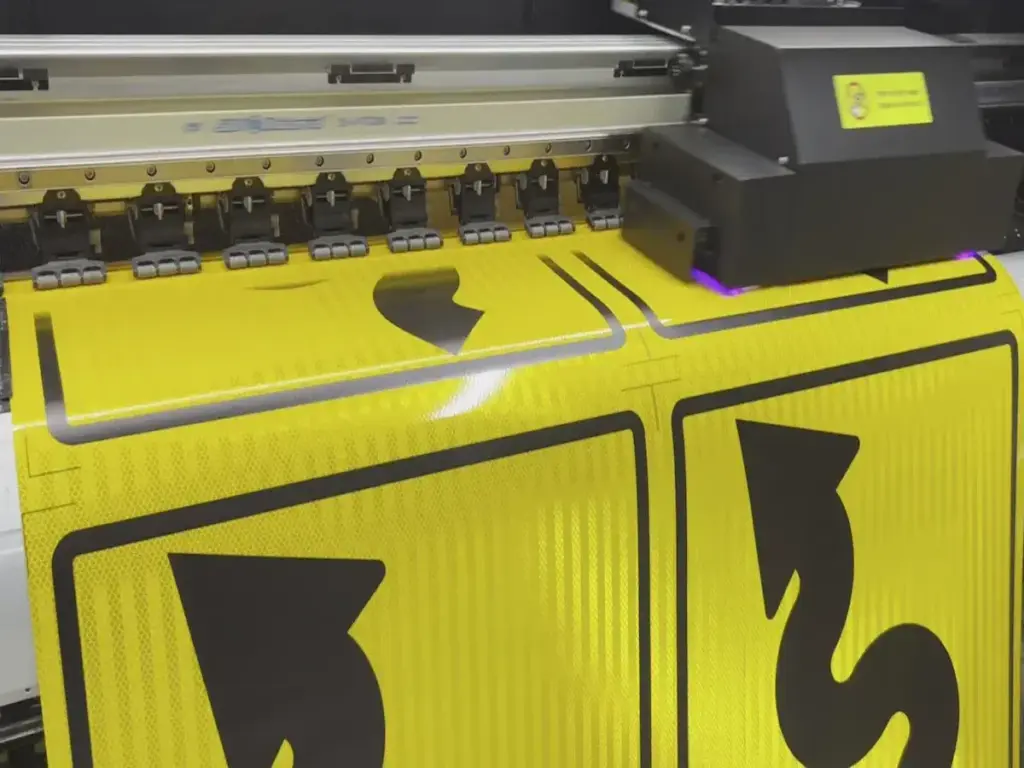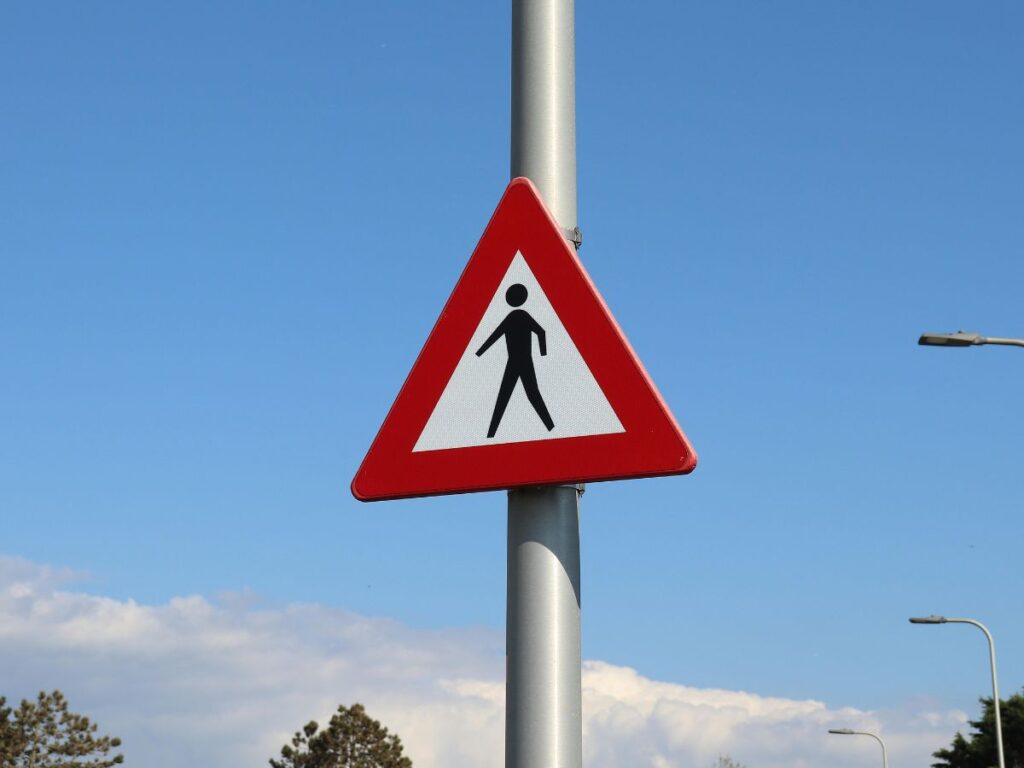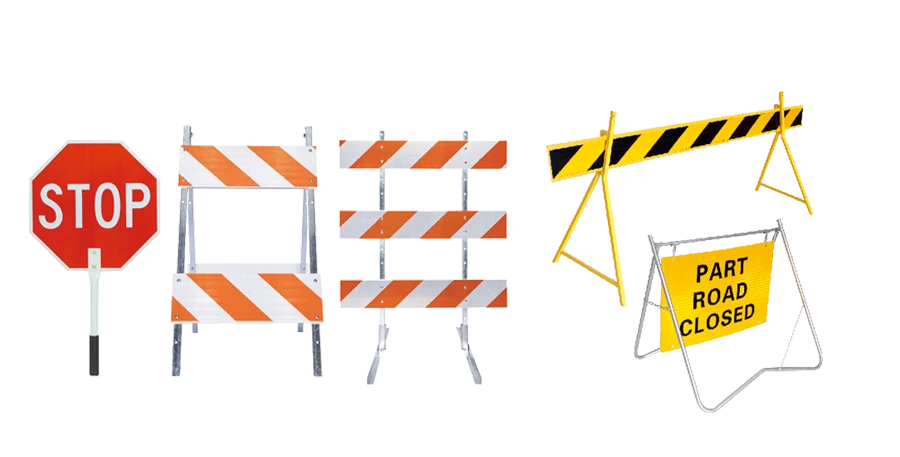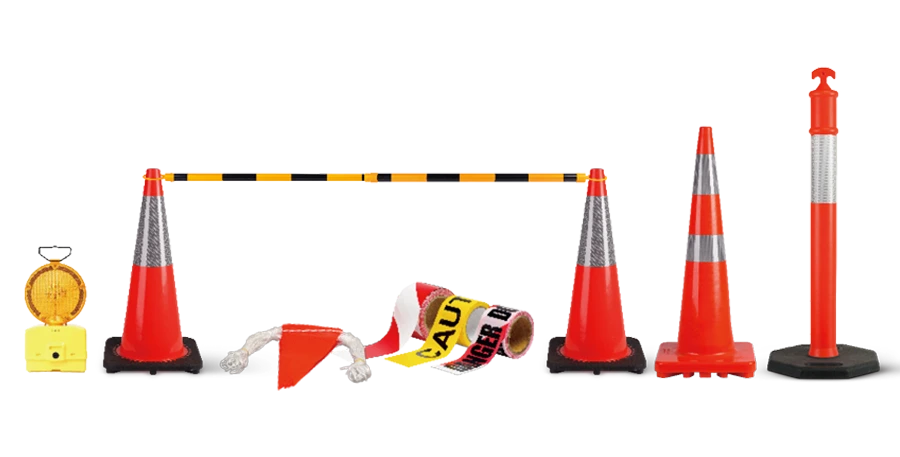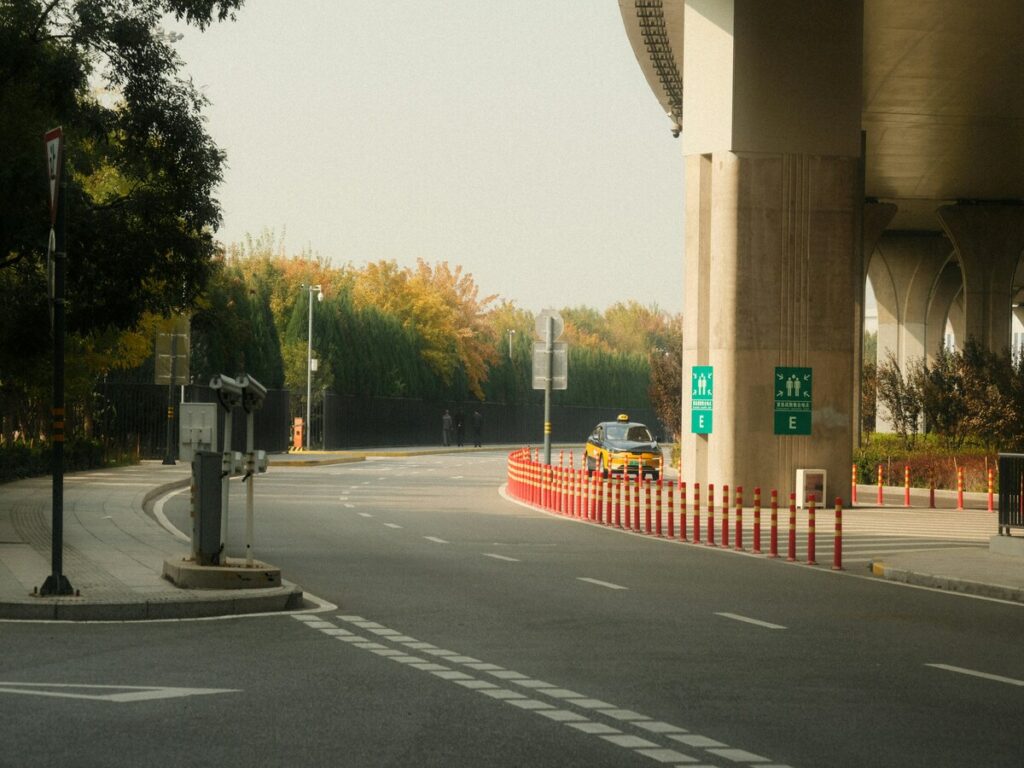
I delineatori di plastica sono strumenti di sicurezza essenziali su strade moderne. Whether you’re navigating a construction zone or a high-traffic area, plastic delineator clearly demarcates traffic lanes and provide crucial guidance to drivers. Their role goes beyond just marking lanes—they are integral to road safety, visibilità, and the overall effectiveness of traffic management.
In questo blog, we will explore the significance of plastic delineators, with a special focus on polietilene (PE), a widely-used material for their manufacture. We’ll dive into the environmental benefits of PE, its strengths and weaknesses, and why it’s the material of choice for those seeking both performance and sustainability.
What is A Plastic Delineators?
UN plastic delineator is a road safety product that helps drivers identify lanes, curve, and boundaries on the road. These delineators typically consist of a flexible post or column made from durable plastic materials, which are fitted with reflective elements for visibility.
Plastic delineators come in various designs, such as rigid or flexible posts, and they are used for traffic control, zone di sicurezza, and construction work sites. The reflective bands on these devices ensure visibility, even in low light conditions such as fog or at night, making them an invaluable safety feature.
Understanding Polyethylene (PE): The Material Behind A Plastic Delineator
Polietilene, often referred to as PE, is a thermoplastic polymer that forms the base for many modern traffic delineators. It is created through the polymerization of ethylene, a byproduct of petroleum or natural gas.
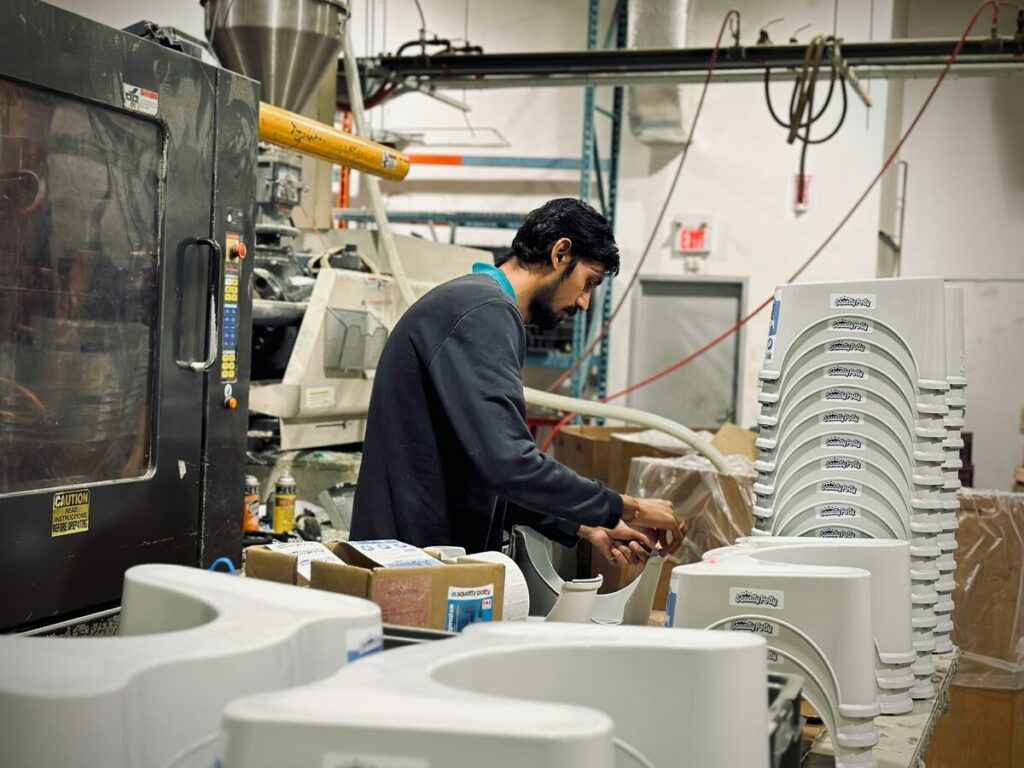
How PE is Made
The production of polyethylene (PE) starts with the extraction of ethylene, UN gaseous hydrocarbon sourced from natural gas or crude oil. Manufacturers then subject ethylene to a polymerization process, which chemically transforms it into long chains of polyethylene molecules. This results in the creation of polyethylene resin. Dopo, the resin melts and molds into various shapes, such as traffic delineators, commonly used on roads and construction sites.
Alongside the use of virgin polyethylene, manufacturers increasingly incorporate recycled PE into the production process. This approach reduces the environmental footprint by repurposing post-consumer plastic waste instead of relying solely on raw materials. By utilizing recycled PE, industries minimize plastic waste, cut down on energy consumption, and reduce the carbon footprint of production. This shift not only promotes sustainability but also helps meet the growing demand for eco-friendly solutions in manufacturing, including in products like traffic delineators.
The Benefits of PE Plastic Delineator
Durata e resistenza alle intemperie
One of the most significant advantages of PE is its outstanding Resistenza alle intemperie. Plastic delineators made from PE are highly resistant to the damaging effects of UV rays, piovere, nevicare, e temperature di congelamento. This ensures that PE delineators maintain their integrity and visibility throughout different seasons and harsh weather conditions.
Inoltre, PE is non-corrosive, meaning it won’t rust or deteriorate over time, unlike metal or steel alternatives. This durability translates to fewer replacements and lower maintenance costs for municipalities or companies responsible for road safety infrastructure.
Flessibilità e resistenza all'impatto
PE is a flexible material, which means traffic delineators made from PE can withstand impacts better than rigid materials. This flexibility allows PE delineators to absorb shocks from vehicles without breaking or shattering. This characteristic is especially beneficial in high-traffic areas, where accidental bumps or crashes are more likely.
Leggero e facile da gestire
Compared to materials like concrete or metal, PE is significantly lighter. This makes it easier to handle, installare, e trasporti, which can lower installation costs and time. In construction zones or places where delineators need to be moved frequently, PE is an ideal choice due to its lightweight nature.
Costo-efficacia
PE is relatively inexpensive to produce compared to other materials like acrylic, PVC, o metallo. This cost-effectiveness makes PE traffic delineators an attractive option for municipalities and contractors looking for a budget-friendly, durable solution to road safety.
100% Riciclabalità
Perhaps one of the most important benefits of PE is its recyclability. After their useful life, PE delineators can be recycled and reused to create new products, minimizing waste and conserving natural resources. This aligns with the growing demand for environmentally conscious construction and infrastructure materials.
Segni OPT offers top-quality polyethylene (PE) products designed for both durability and sustainability. Loro PE delineators provide exceptional impact resistance, ensuring a longer service life even in high-traffic environments.
The Environmental Impact of Using PE Delineators
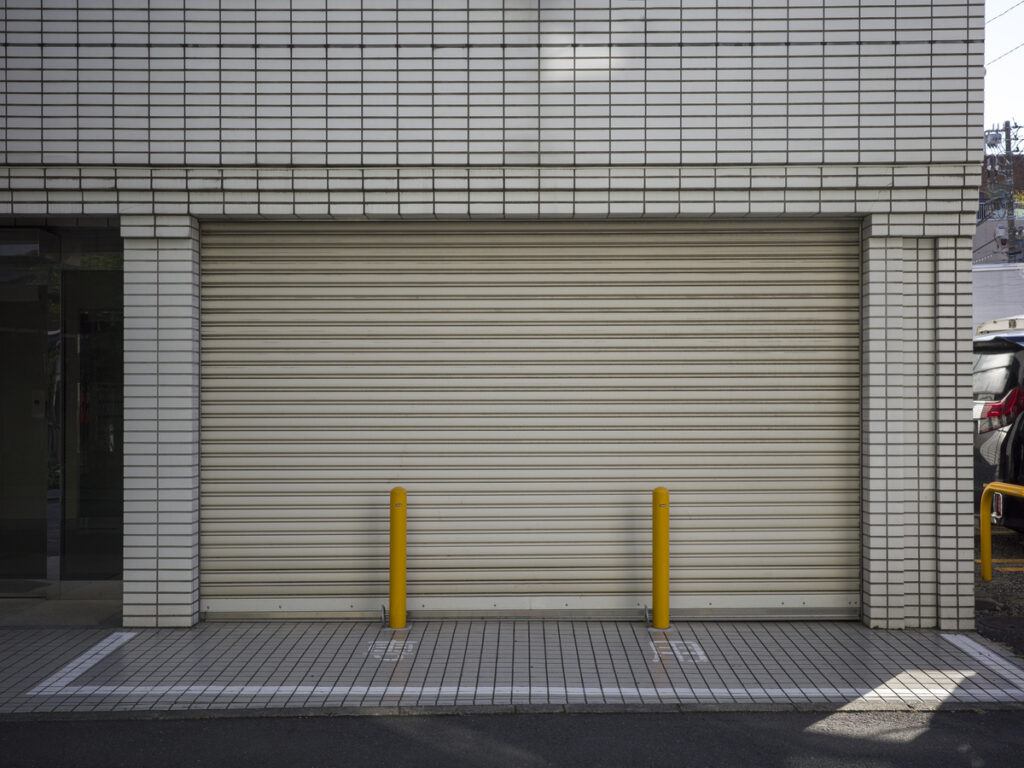
Reduced Carbon Footprint
The production of polyethylene (PE) delineators consumes less energy than the manufacturing of materials like metals or glass. This energy efficiency stems from the relatively simple processes involved in producing PE, such as polymerization and molding, which require less heat and energy compared to the smelting and shaping of metals or the melting and molding of glass.
When manufacturers use recycled PE, energy consumption drops even more significantly. Recycling PE eliminates the need for extracting and processing raw petroleum, which requires a substantial amount of energy. By reusing post-consumer plastic, industries reduce the amount of energy needed to produce new delineators. This process not only lowers energy use but also helps cut carbon emissions, making recycled PE delineators an even more sustainable option. Di conseguenza, PE delineators provide a practical choice for organizations and projects focused on reducing their environmental impact while maintaining high product quality.
Recycling Potential
PE’s ability to be recycled is a key factor in its sustainability. Unlike non-recyclable materials, PE can be reprocessed into new products after its life as a traffic delineator. By choosing PE over non-recyclable materials, we help close the loop on waste and reduce the strain on landfills.
Lower Resource Consumption
Because PE delineators last longer than many alternatives and require less frequent replacement, fewer resources are needed in the long run. The material’s durability also means less manufacturing waste, making PE a more resource-efficient choice.
Challenges of Using PE for Traffic Delineators
While PE has numerous advantages, it’s not without its challenges. Understanding these limitations is essential when considering PE for traffic safety products.
Limited Structural Strength
PE, sebbene durevole, is not as strong as some alternatives. In particularly high-risk areas, such as roads with extreme traffic or heavy vehicles, PE delineators might not provide the same level of structural strength as steel or concrete-based systems. Tuttavia, the flexibility and impact resistance often compensate for this limitation.
Color Fading Over Time
While PE delineators are resistant to Raggi UV, prolonged exposure to sunlight can cause the color to fade. This can affect the visibility and aesthetics of the delineators. Tuttavia, modern PE delineators are often treated with UV stabilizers to extend their lifespan and maintain their reflective properties.
How PE Delineators Compare to Other Materials
To make an informed decision, it’s essential to compare PE delineators with alternatives like PVC, acrilico, e metallo.
PE vs. PVC
Both PE and PVC serve as materials for traffic delineators, but PE offers greater flexibility and durability, which makes it less likely to crack or break when subjected to impacts. This flexibility allows PE delineators to absorb shocks better and return to their original shape after being deformed, which is particularly useful in high-traffic areas where frequent collisions with vehicles or equipment are common.
Al contrario, PVC tends to be more rigid, giving it a stiffer structure. While this rigidity can provide some stability, it also makes PVC more susceptible to brittle fractures under heavy impact or stress. When PVC delineators face strong forces, they may crack or break more easily than their PE counterparts, leading to a higher risk of damage and reduced lifespan in challenging environments. Di conseguenza, PE delineators tend to perform better over time, especially in locations where impacts are frequent or severe.
PE vs. Acrilico
Acrylic is a strong, transparent material widely used in signage and markers due to its clarity and ability to display vibrant colors. Tuttavia, despite its strength, acrylic has a tendency to break or shatter more easily under high impact. Its brittleness makes it less suitable for environments where physical stress or collisions are common.
Al contrario, PE excels in impact resistance. The material’s flexibility allows it to absorb and distribute forces more effectively, making it less prone to cracking or breaking, anche in aree ad alto traffico. PE’s ability to withstand impact without shattering makes it a safer and more durable choice for road safety applications, especially in locations where traffic volumes and risks of accidents are high. The superior impact resistance of PE helps maintain the integrity of traffic delineators, ensuring they continue to perform well and provide visibility and safety for longer periods.
PE vs. Metallo
Metal delineators are known for their exceptional durability and ability to withstand rough conditions. Tuttavia, they have a significant downside: col tempo, metal can corrode, especially in environments with high moisture or exposure to salt, such as coastal areas or regions that use salt for winter road maintenance. Corrosion weakens the metal structure, leading to maintenance costs and potential safety risks as the delineators degrade.
PE, in contrast, remains resistant to corrosion, making it an ideal choice for environments prone to moisture or salt exposure. This resistance helps PE delineators maintain their structural integrity over long periods, providing a more reliable and low-maintenance solution. Inoltre, PE’s lightweight nature makes it easier and less costly to transport, installare, and replace compared to metal alternatives. Metal delineators are heavier and typically come with higher production and installation costs, whereas PE offers a cost-effective option with fewer long-term expenses due to its durability and corrosion resistance.
In the world of traffic safety, plastic delineator made from polyethylene (PE) offer a compelling combination of durability, flessibilità, e sostenibilità. PE’s ability to withstand harsh environmental conditions while remaining cost-effective and recyclable makes it an ideal choice for modern infrastructure.
As cities and businesses continue to prioritize sustainability, plastic delineator provides a smart solution for reducing waste, conservare le risorse, and promoting road safety. Whether you’re looking to improve traffic management, reduce your environmental impact, or ensure better visibility on the roads, PE plastic delineator is a choice that benefits both people and the planet.

